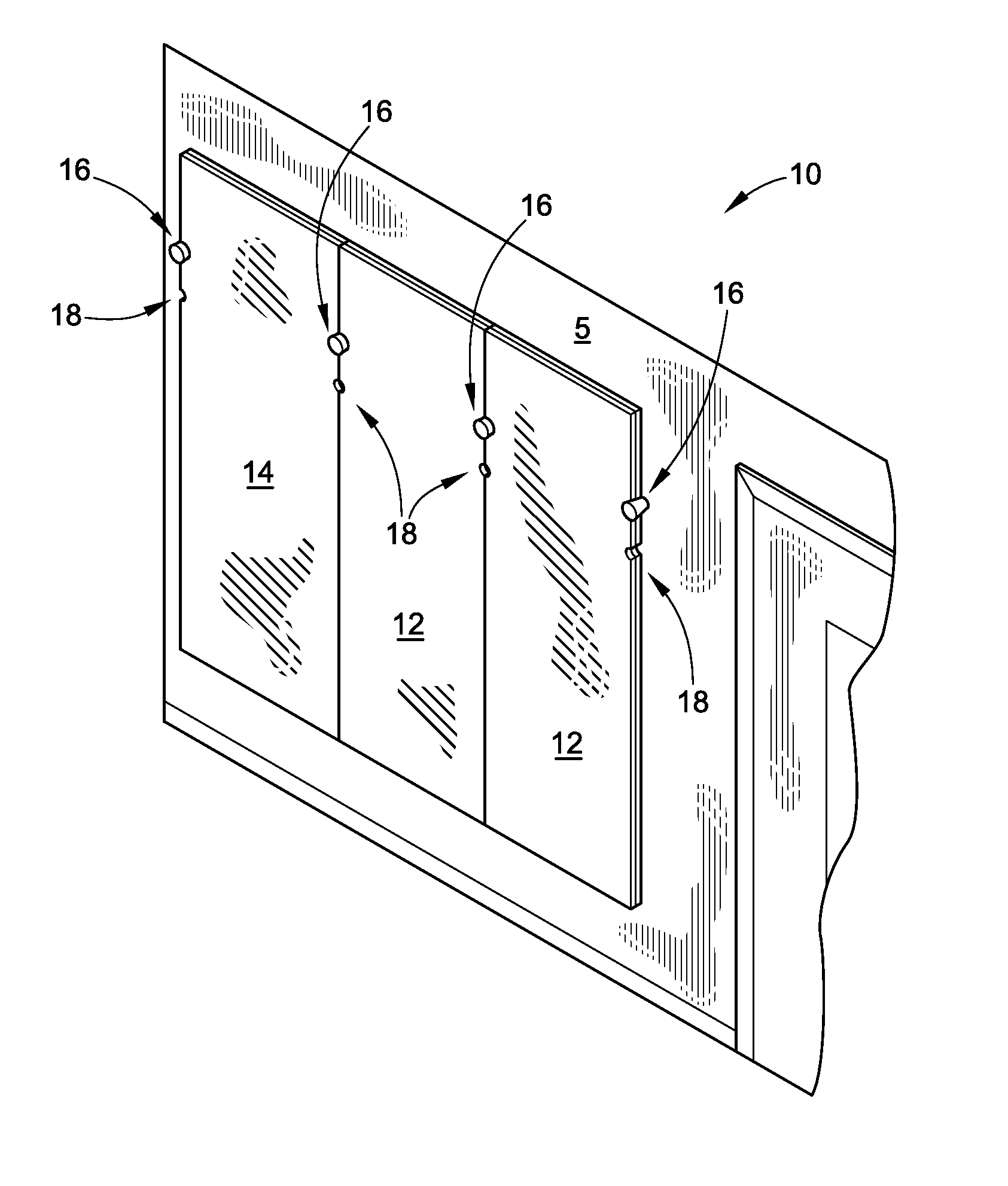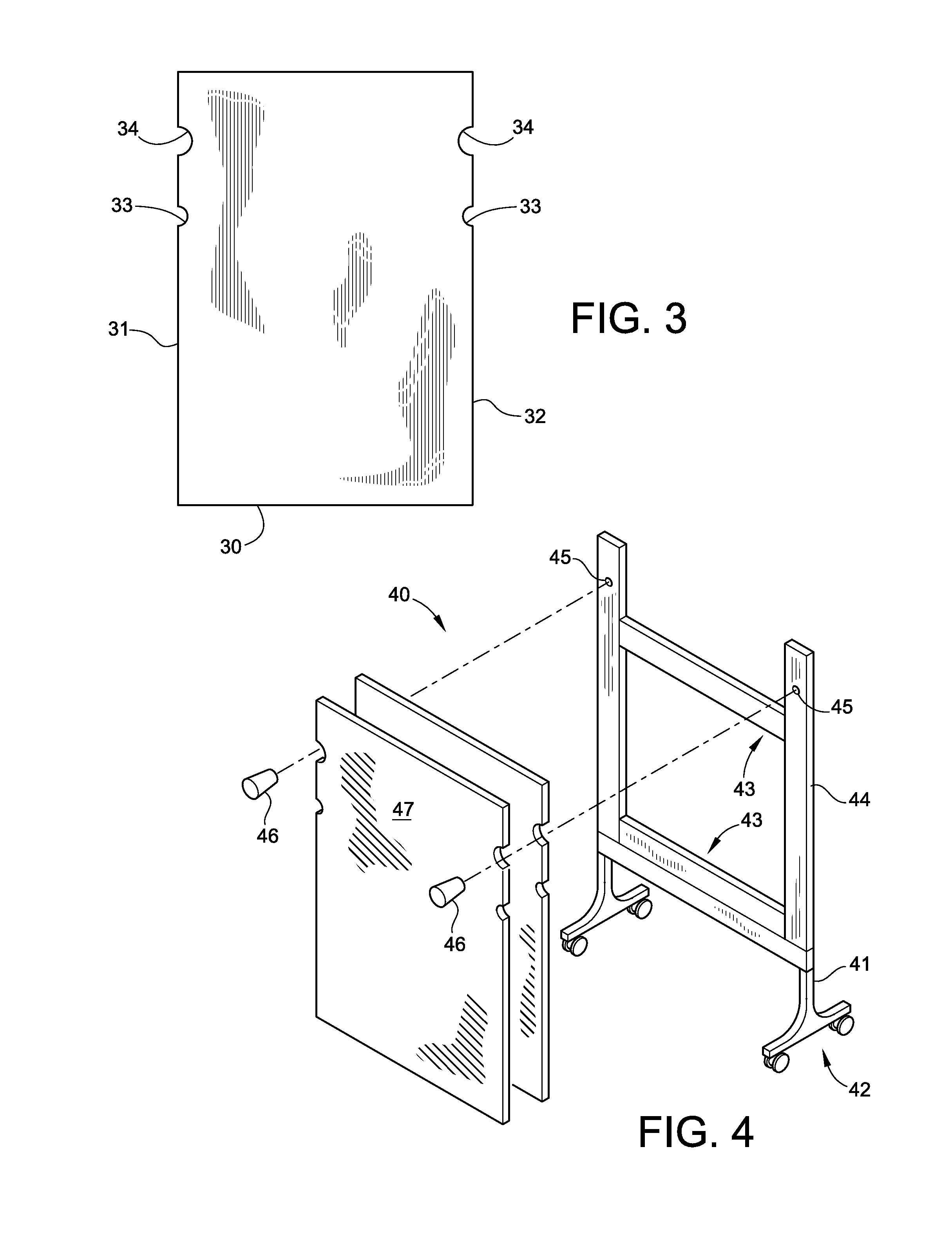Collaborative panel system
a collaborative panel and panel technology, applied in the field of modular and portable panels, can solve the problems of cumbersome systems allowing portability, disadvantages of conventional systems, and inability to move on most surfaces easily,
- Summary
- Abstract
- Description
- Claims
- Application Information
AI Technical Summary
Problems solved by technology
Method used
Image
Examples
Embodiment Construction
[0020]FIG. 1 depicts an embodiment of the invention wherein six lightweight, portable panels are removably mounted to a wall three wide and 2 deep. The panels are stacked and thus FIG. 1 does not readily show the backmost panels. In FIG. 1, a wall 5 provides a mount for a collaborative panel system 10. The panel system 10 includes a top layer of three panels, including two writing surface panels 12 and an attachment surface panel 14 on the left. These panels are described below. The panels are mounted to the wall with small pegs 16 using cutouts (not seen in FIG. 1) on the edges of the panels. The cutouts, more easily seen in FIG. 3, are simply spaces on the edges of the panels that are suitable for holding by the pegs. The panels are also provided with finger pulls 18, which are smaller cutouts that enable users to easily remove individual panels from the pegs. The system depicted in FIG. 1 also includes a second layer of panels beneath the top layer. Users may quickly and easily r...
PUM
| Property | Measurement | Unit |
|---|---|---|
| sizes | aaaaa | aaaaa |
| sizes | aaaaa | aaaaa |
| distance | aaaaa | aaaaa |
Abstract
Description
Claims
Application Information
 Login to View More
Login to View More - R&D
- Intellectual Property
- Life Sciences
- Materials
- Tech Scout
- Unparalleled Data Quality
- Higher Quality Content
- 60% Fewer Hallucinations
Browse by: Latest US Patents, China's latest patents, Technical Efficacy Thesaurus, Application Domain, Technology Topic, Popular Technical Reports.
© 2025 PatSnap. All rights reserved.Legal|Privacy policy|Modern Slavery Act Transparency Statement|Sitemap|About US| Contact US: help@patsnap.com



